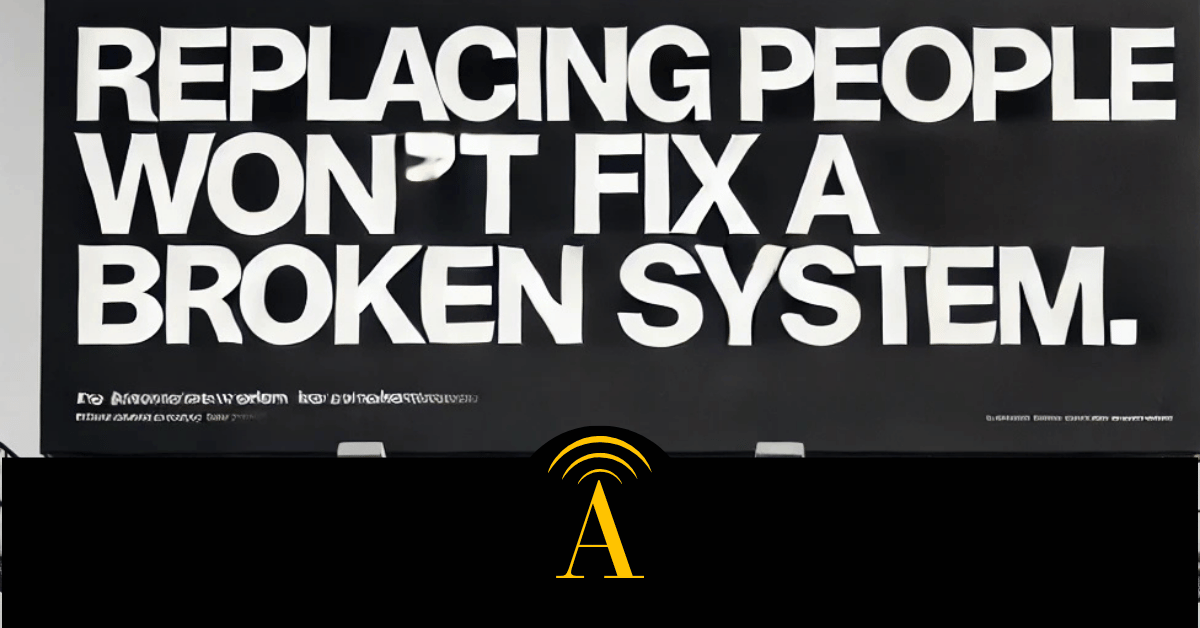I recently worked with a team that had replaced their leader, hoping for a fresh start.
But when I spoke to the team members individually, a pattern emerged:
The same issues that existed before the new leader arrived were still there. Nothing meaningful had changed.
It wasn’t about the previous leader.
It wasn’t about the new leader.
It was the system.
A team isn’t just a collection of capable people—it’s a system of structures, incentives, workflows, decision rights, norms, and feedback loops. When those pieces fit, the leader and the team amplify each other. When they don’t, swapping people rarely fixes the deeper issue.
The Leader, the Team, and the System
- ✅ A leader is not more important than the team.
- ✅ A team is not more important than the leader.
- ✅ Performance is a relationship—and the relationship lives inside the system.
Think of it like a car with an engine alignment problem. You can replace the driver (or even a wheel), but the vehicle will still drift until you fix the alignment. Organizations make this mistake often: they replace people instead of repairing the system.
What “System” Really Means (So You Can Change It)
When I say “system,” I’m pointing at concrete levers you can touch:
- Purpose & Priorities
- Is there a single, clear definition of success for the next 90 days?
- Do people know which work is strategic vs reactive?
- Decision Rights & Autonomy
- Who decides what—and at what speed?
- Where are approvals piling up?
- Collaboration & Connection
- Are handoffs crisp or fuzzy?
- Do cross-team dependencies have owners and SLAs?
- Evidence of Progress
- Are we tracking a few leading indicators weekly (not 30 lagging KPIs monthly)?
- Do we review learning, not just outcomes?
(If you know my PACE framework—Purpose, Autonomy, Connection, Evidence—you can see it embedded here.)
Why Leader Swaps Underperform
Replacing talent without repairing the system creates predictable costs:
- $500K+ per executive in all-in replacement costs (search, hiring, ramp, cultural re-acculturation).
- Months of lost momentum while the new person maps the terrain and builds trust.
- Pattern persistence: the same bottlenecks reappear—just with new names attached.
- Cultural debt: the story becomes “people are the problem,” which erodes psychological safety and candor.
Signs You Have a System Problem (Not a People Problem)
- The same role churns every 12–18 months.
- “Escalate to the leader” is the default workaround.
- Meetings proliferate while decision speed stalls.
- High performers succeed through heroics, not a healthy, sustainable process.
- Post-mortems name individuals more than mechanisms.
The Better Alternative: Diagnose → Simplify → Run Experiments
Here’s a compact 30-day playbook I use with teams to create systemic lift fast:
Week 1 — System Scan (PACE)
- Purpose: Write the one-sentence 90-day outcome. Kill or pause work that doesn’t serve it.
- Autonomy: List the top 5 recurring decisions. Assign clear owners; remove one approval step.
- Connection: Map the 3 most painful handoffs. Add owners and “definition of done” checklists.
- Evidence: Pick three leading indicators you’ll review every week (not just end-of-quarter results).
Week 2 — Friction Audit
- Shadow a real work item from start → finish. Note delays, rework, unclear inputs.
- Identify the single biggest constraint (e.g., wait time for approvals, unclear specs, tool sprawl).
Week 3 — Two Safe-to-Try Experiments
- Change one policy (e.g., default decisions under $X stay within the team).
- Change one ritual (e.g., replace status meetings with an async update + 20-minute block for decisions).
Week 4 — Review & Lock-In
- Did decision speed improve? Did rework drop? Are the three leading indicators moving?
- Keep what worked, revert what didn’t, and schedule the next two experiments.
Small, systemic shifts beat big, personnel swaps—every time.
What This Means for You
If you’re leading a team—or coaching one that’s struggling—ask:
- Are we over-focusing on individual performance and under-diagnosing the system?
- Have we assumed a leadership change will fix a structural issue?
- Are we building an environment where the leader and the team can thrive together—by design, not by effort alone?
Most leadership problems aren’t people problems—they’re system problems.
Great leaders don’t just change the people; they change the system so people can do the best work of their careers.
Try This in the Next 7 Days
- Run a 30-minute “decision speed” review. List the top 5 recurring decisions and their current throughput. Remove one approval.
- Choose three leading indicators. Review them weekly with the team.
- Fix one handoff. Define inputs, owner, and “definition of done” for the messiest cross-team exchange.

